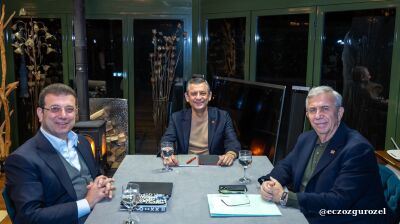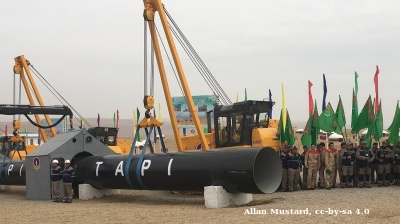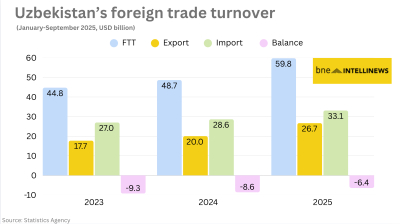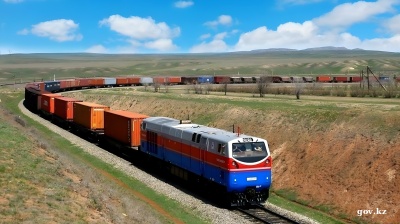The winds of change are blowing in Central Asia. The removal of currency controls in Uzbekistan on September 5, abolishing the country’s dual exchange rate, marks a historic event both for the country and for the region. No less importantly, the move confirms Uzbek President Shavkat Mirziyoyev has seriously reformist goals, bringing to life one of his first major promises since he came to power a year ago after the end of the quarter-century reign of the late autocrat Islam Karimov.
The dual rate exchange system converged at UZS8,100 on September 5. One day prior, the strict currency controls saw the Uzbek sum trading at around UZS4,210 to the dollar at the official rate and UZS7,700-8,000 at the black market rate.
Uzbekistan is the natural destination of choice for a would-be investor in Central Asia. It has by far the largest population (which is growing fast) and is the only one of the 'Stans that has a border with all the others. It is the obvious production and distribution centre for the whole region. Foreign investors flocked to the country in the early 1990s only to leave again when Karimov killed the ability to convert the currency.
The origins of the now defunct dual exchange rate go back to the early 1990s when Uzbekistan saw a boom in private enterprise. As stores opened up across Central Asia’s most populated country to fill the insatiable demand for imports, Karimov was horrified when he discovered his country was running a $1bn trade deficit.
“We are not going to waste our precious hard currency reserves on importing chewing gum,” Karimov announced in a famous speech, and went on to introduce the strict currency conversion scheme. Dollars disappeared overnight, giving way to the dual exchange rate regime. Newly unable to repatriate profits in hard currency, the interest of foreign investors in Uzbekistan evaporated. Shops began closing and the elite, which did have access to dollars via the then newly established National Bank of Uzbekistan, began to take over the country’s most successful businesses.
Even among those investors who stayed, a foreign business exodus ensued in subsequent decades in no small part facilitated by Karimov’s crackdowns. Mirziyoyev, however, has already started welcoming businesses back into the country, even prior to the announcement of plans to liberalise exchange rates. That can be seen in the return of Turkish businesses that is taking place.
FDI and trade
Currency convertibility had been one of the major bugbears for the handful of foreign investors operating in the country, stifling Uzbekistan's overall foreign investment potential, compared to when the country was one of the leading Central Asian destinations for foreign investors in the early 1990s. It stands to reason therefore that Uzbekistan might retake its leading regional role following the currency liberalisation.
“Net FDI grew from minus $24mn in 1995 to $167mn in 1997, a period of optimistic expectations about reforms in Uzbekistan,” according to an Asian Development Bank report from 2005. Yet the newly imposed restrictive foreign exchange and banking regimes set in 1996-1997 caused problems in access to foreign exchange repatriation of profits and purchase of imported inputs. That, combined with a host of other side effects, brought about a sharp decline in net FDI from $140mn in 1998 to $74mn in 2000.
The succeeding years constrained foreign investment even more, after Karimov’s government installed controls designed to support Uzbekistan’s infant industries via an import substitution strategy and foreign exchange conservation. These impediments to trade and foreign investment were lightened in 2011 and, since then, “foreign investment to Uzbekistan has reached $1.2bn in the first half of 2016 and $2.7bn in total, according to preliminary findings,” Scandinavian banking group Nordea said in its country profile for Uzbekistan, citing Uzbek government statistics. “It is important to notice, however, that these figures highly contrast with the most recent UNCTAD data that suggest a paltry sum of $66mn in FDI inflow in 2016.”
The relatively low foreign investment levels can be contrasted with FDI in Uzbekistan’s neighbour, Kazakhstan, where it grew to $9bn in 2016, after a 126% surge from 2015. Kazakh FDI only amounted to below half a billion dollars in 1994. Fresh investment opportunities in Uzbekistan – with a population of 32mn people, and with the largest consumer market in the region - should now pose a challenge to the 18mn-strong Kazakhstan. At the same time, Uzbekistan has a high birth rate and will overtake Poland in the next decade in terms of the number of citizens to become the third most populous country in Eurasia after Germany and Russia.
Even if Uzbekistan does not triumph in overtaking Kazakhstan as the top destination for foreign investment – it lacks the significant hydrocarbon resources of its neighbours – the country still has a lot of space for catching up after nearly 20 years worth of missed investment opportunities.
There could be a limit to the upsides of currency reform. It will undoubtedly improve the prospects for foreign investors and exporters, but importers, so far, seem unlikely to enjoy the full benefits of pre-Karimov regulation-era trade. In March, Mirziyoyev made it clear the country intends to keep some of its protectionist policies in place for the time being, when he announced a plan to reduce Uzbekistan’s imports by $1.1bn in 2017.
Some of these policies will be carried out through import substitution measures such as increasing local content in manufacturing facilities that assemble products from foreign imports. But it is not unreasonable to expect Uzbekistan to implement or maintain quotas and tariffs in order to keep its own products competitive. The transition to a fully open capital account will be gradual, if it reaches that goal at all.
“[Uzbekistan’s] customs duties for imported goods range from zero to more than 100%, but the average rate is approximately 30%,” according to a 2017 update by the US export.gov website.
“Since January 2010, 5% customs duties are applied to imported live animals, milk and cream, wheat, and computer hardware; 10%-30% duties are applied to clothing, furniture, metals, foodstuffs; and more than 50% duties are applied to luxury consumer goods such as cigarettes and cars,” it added.
Inflation worries
One of the key challenges standing in Uzbekistan’s way is the possible impact of inflation on existing Uzbek businesses following the adoption of the floating exchange rate regime. To address this, the country announced it had $20bn in hard currency reserves in July – the first time it has reported its gold and foreign currency reserves. The government pledged to support Uzbek businesses as they adjust to new conditions.
“Given Uzbekistan’s ample foreign exchange reserves, the reform can be implemented from a position of strength,” the International Monetary Fund (IMF) said on July 24. The gold and foreign exchange reserves of $20bn is enough to cover two years of imports – a very large reserve.
The IMF mission welcomed the Uzbek authorities' plan to frontload reforms of the foreign exchange system, it said in a statement published following a visit to Uzbekistan between July 17-24, and relations with the international fund are also expected to warm as it reengages with the government after decades of minimal contact.
Before the country can proceed, it needs to solve the issue of existing double-digit inflation, which remained hidden behind the dual exchange rate mechanism. Despite official figures reporting annual consumer price hikes of 5-7%, independent press and economic reports from 2016 suggest the real rate of inflation is running at between 20% and 30% a year. The danger is that freeing the currency will bring this inflation out into the open.
To curtail unreported double-digit inflation, the Central Bank of Uzbekistan dramatically hiked its refinancing rate by 5 percentage points a few months ago to 14% after barely touching the overnight rate for years.
“Unifying exchange rates and allowing a market-based allocation of foreign exchange resources would allow the Central Bank of Uzbekistan (CBU) to pivot to a stability-oriented monetary policy capable of effectively controlling inflation,” the IMF noted.
All consumer goods within the country have historically been priced in accordance with the black market rate and, as such, the convergence of the official and black market rates at UZS8,100 against the greenback is expected to keep Uzbek consumers largely unaffected by the liberalisation.
But Mirziyoyev has, nonetheless, ordered the Uzbek authorities to prepare measures to curb potential rapid inflation. According to the Uzbek president’s decree from September 2, state committees and law enforcement authorities “should strengthen measures to prevent and suppress unreasonable growth of prices and tariffs for socially significant goods and services,” state-run UzDaily.uz news agency reported on September 4.
Increased employment options back home
Last but not least, another positive side effect of abolishing the strict currency regime might be a reduction of Uzbekistan’s reliance on remittances from Uzbek migrant workers, mostly in Russia, for foreign currency inflows. Remittances “make up 13-15% of the country's GDP and a large portion of the population’s foreign exchange earnings,” Alisher Taksanov, an exiled economist based in Switzerland told bne IntelliNews last year. The migrant workers themselves will certainly benefit from the increased employment options within their home country.
“The reform would also promote job creation and growth by increasing external competitiveness, attracting foreign direct investment (FDI), and improving the allocation of domestic resources,” the IMF mentioned in its statement.
One thing is clear. Foreign companies will be either returning to Uzbekistan or entering it for the first time. Some entities were already back in the fold prior to the reforms, including the European Investment Bank and the European Bank for Reconstruction and Development. It is now up to Mirziyoyev to see the transformation through, but if he does the whole economic structure of Central Asia could be radically transformed and Tashkent may emerge as the capital of the region.
Features

US expands oil sanctions on Russia
US President Donald Trump imposed his first sanctions on Russia’s two largest oil companies on October 22, the state-owned Rosneft and the privately-owned Lukoil in the latest flip flop by the US president.
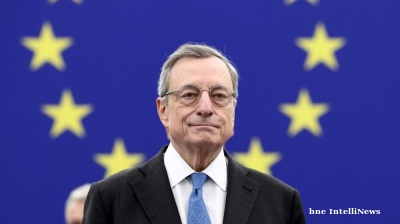
Draghi urges ‘pragmatic federalism’ as EU faces defeat in Ukraine and economic crises
The European Union must embrace “pragmatic federalism” to respond to mounting global and internal challenges, said former Italian prime minister Mario Draghi of Europe’s failure to face an accelerating slide into irrelevance.
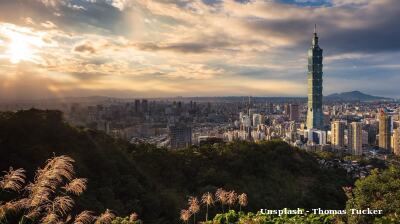
US denies negotiating with China over Taiwan, as Beijing presses for reunification
Marco Rubio, the US Secretary of State, told reporters that the administration of Donald Trump is not contemplating any agreement that would compromise Taiwan’s status.
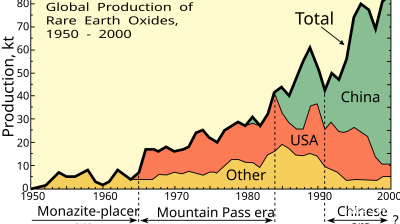
Asian economies weigh their options amid fears of over-reliance on Chinese rare-earths
Just how control over these critical minerals plays out will be a long fought battle lasting decades, and one that will increasingly define Asia’s industrial future.
